Part of the eastern bank of the Hudson River, just south of the Route 8 bridge at Riparius/Riverside in the Adirondacks of New York. A year ago, this was all underwater, inundated by flood waters from Hurricane Irene.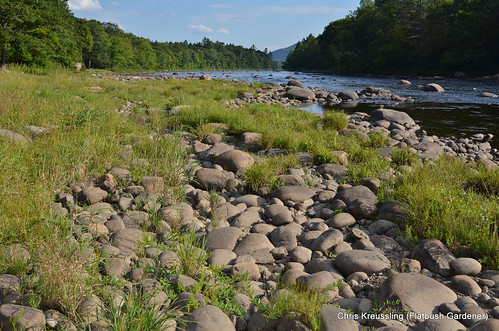
One year ago, Hurricane Irene reached New York City. The damage in my neighborhood was slight: downed trees and large tree limbs. 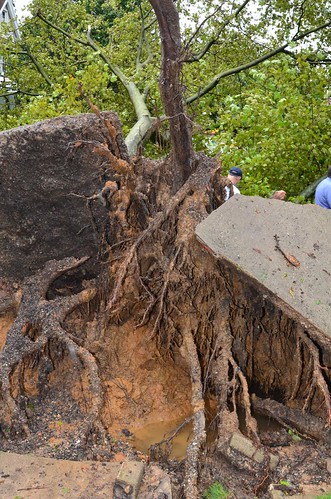
Our post-engagement pre-honeymoon vacation was delayed a day, simply because there were no roads open out of the city to our destination. Even the New York State Thruway was closed along most of its length: many entrance and exit ramps flooded, and it was safer to keep people off the road altogether.
Irene’s rains continued north, devastating the Catskills. At New Paltz, the Wallkill River overtopped its banks. This was a cornfield; the entire crop was lost. The sunflowers at the far end of the field are ten feet tall.
The rains reached the Adirondacks. Which was exactly where our vacation plans were taking us. We arrived at Riparius, NY, on the banks of the Hudson River in the Adirondacks, just after Labor Day 2011, a few days after Irene had passed and the rains subsided.
The river was still swollen a few feet above its normal level. Never having been there before, I had no frame of reference. But I could see the waters lapping onto the lawns below the cabins, and saw grasses flowing beneath the waters. The few rocks visible were submerged, or nearly so.
Last week we arrived at a different river, the wild Hudson, still freshly scrubbed and scoured by Irene’s floodwaters. The water, and banks, are now dominated by smooth, polished river rocks. In Adirondack tradition, I constructed a cairn on the shore near the cabin where we were staying.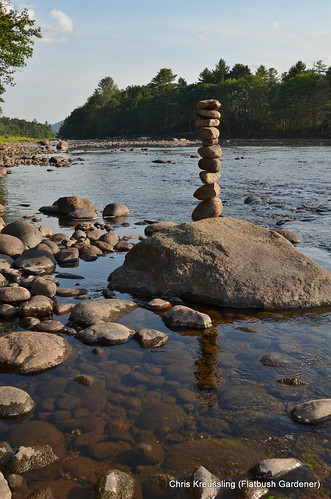
The evidence of Irene was everywhere. In addition to the plentiful now-exposed rocks, bank erosion was visible nearly the entire length of the shoreline here, cutting back into the mowed lawns hosting Adirondack chairs sited to view the sunset over the Hudson. The rocks themselves seemed relatively little disturbed. What Irene did was clear away a good foot or so of soil and plant growth that had overlaid the rocks, revealing the older, rocky bank beneath. 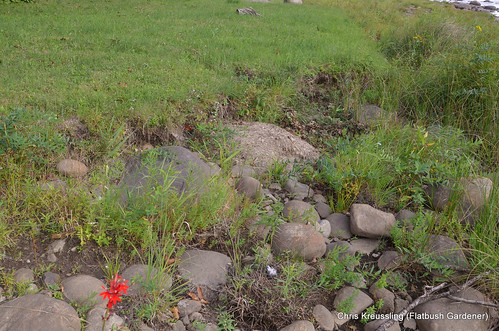
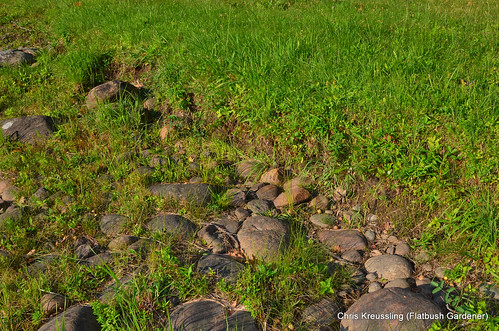
One can see here that larger rocks amplified the power of the moving waters around them, scouring away the soil that previously surrounded them. The absence of lichens on the upper surface of this rock indicates it probably was previously covered with at least a thin layer of soil and plant roots. Now, a year after Irene, it stands alone. 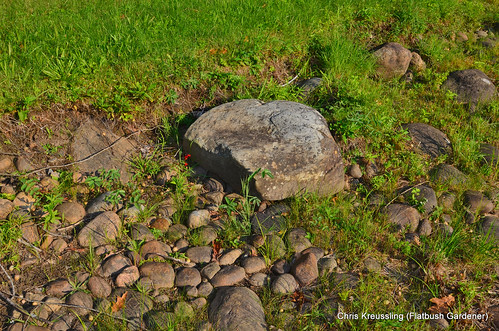
Remarkable, to me, was how much plant life remained among the rocks. Most of what’s visible in this photo was inundated a year ago. The line of erosion can be clearly seen along the right. In some places, a foot or more of soil was washed away with Irene’s floods. This exposed the rocky bank beneath. 
A year ago, the water rose up onto the lawn on the upper right of the photo above. In this photo, just in front of the white bench, the rocky bank of the photo above is barely noticeable. 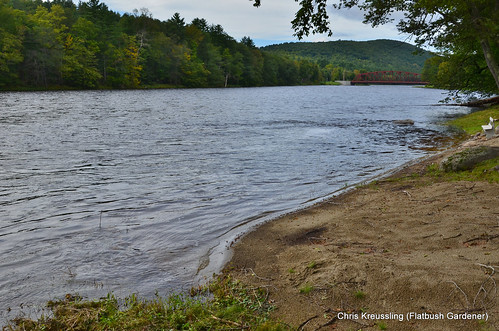
The grasses flowed underwater with the current, like seaweed. 
But not all plants were washed away. Several clumps remained intact. Instead of wiping the slate clean, as Irene did in many places in the Catskills, the old set was struck and the stage reset for the next scene. The regeneration of a soft, soiled bank has already begun, as survivors recover, and pioneers fill in the now empty muck between the rocks.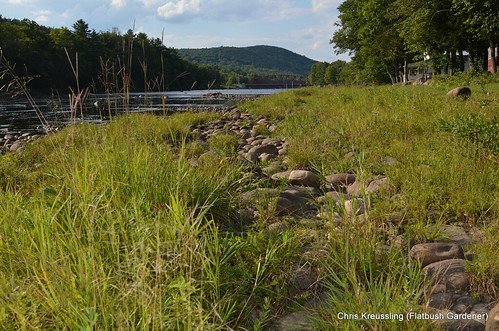
Key to the persistence and recovery are the grasses, the dominant plants in this community. Here’s a detail demonstrating the tenacity of the roots, and their ability to grip bare rock and hold the soil in place against the floodwaters. And not just those of the grasses: one can also see here at least a half-dozen non-grass species growing in and around the grasses. They benefit from this close association simply by being present after the flood, ready to quickly regenerate and re-populate the landscape.
And thus begins the cycle. These plants – and some pioneer grasses – have already begun to restore themselves and their community. Over time, between floods, they will fill in all the gaps among the rocks again, laying down more organic material, and rebuilding the old, soft, green shore. Until the next flood.
The diversity of this plant community – just one year after the flood – surprised me. More evidence that most of these plants survived the flood, rather than colonizing the river just this year. I’m still identifying plants from the photos I took on this strip. And it will probably take me months to upload them all. But here’s a list of the species and genera I’ve been able to identify so far:
- Chelone glabra, White Turtlehead
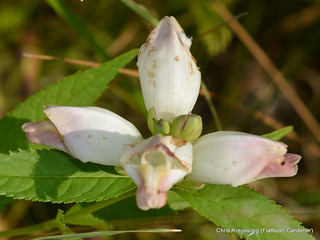
- Cyperus strigosus, Umbrella Sedge

- Eupatorium/Eupatoriadelphus, Joe Pye Weed
- Helenium autumnale, Sneezeweed
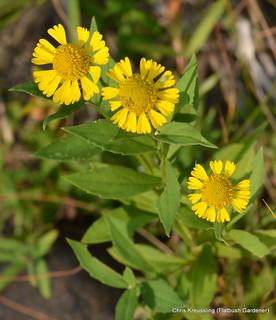
- Iris, probably Yellow Flag
- Lobelia cardinalis, Cardinal Flower (easily identified as the spots of bright red in these photos)
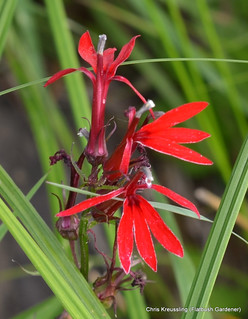
- Lobelia kalmii, Kalm’s or Ontario Lobelia (also new to me, needed to get online before I could identify it with any confidence)
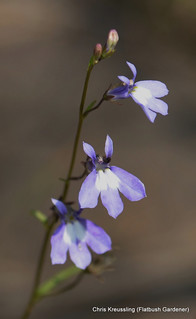
- Lycopus amaricanus, American Water-Horehound (a species new to me, I recognized it as a member of the Lamiaceae, mint family, which aided identification)
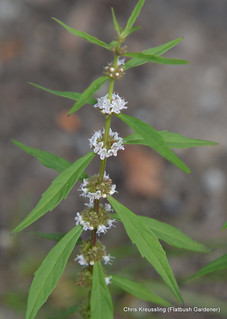
- Lythrum salicaria, Purple Loosestrife (Unfortunate, but I only found three scattered plants. Now would be the best time to remove them, but as a guest, and a stranger, it was not my place to do so on my own.)
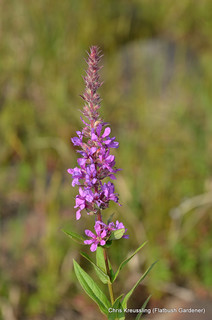
- Mimulus ringens, Allegheny Monkey-flowe

- Myosotis, Forget-Me-Not (haven’t keyed it out yet to determine if it’s a native or introduced species)
- Polygonum amphibium, Water Smartweed (also new to me)
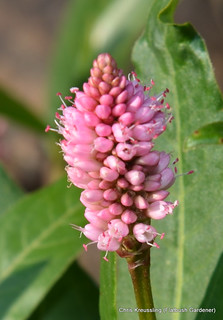
- Sanguisorba canadensis, American Burnet (another new species for me)

- Solidago, Goldenrod
- Spiranthes cernua, Nodding Lady’s-Tresses (also new to me, but I recognized the tiny flowers as orchids, which narrows it down considerably)

- Verbena hastata, Common Verbena (yet another new species for me)

The Adirondacks as we know them today are only 20,000 years old, exposed after the retreat of the Laurentide Ice Sheet (which also gave birth to Long island, including Brooklyn). My stone cairn may be a little sturdier than a sand castle, but its ephemeral nature is part of its charm, and its beauty. I see the river, the rocks, the plants, the mountains themselves with the same eyes. Because I will never see them this way again, they are all the more beautiful to me now.
[goo.gl]
Related Content
Flickr photo sets:
Plants:
- Chelone glabra, White Turtlehead
- Cyperus strigosus, Umbrella Sedge
- Helenium autumnale, Common Sneezeweed
- Lobelia cardinalis, Cardinal Flower
- Lobelia kalmii, Kalm’s or Ontario Lobelia
- Lycopus americanus, American Water-Horehound
- Lythrum salicaria, Purple Loosestrife
- Mimulus ringens, Allegheny Monkeyflower
- Polygonum amphibium, Water Smartweed
- Sanguisorba canadensis, Canadian Burnet
- Spiranthes cernua, Nodding Lady’s-Tresses
- Verbena hastata, Swamp Monkeyflower, Common Monkeyflower
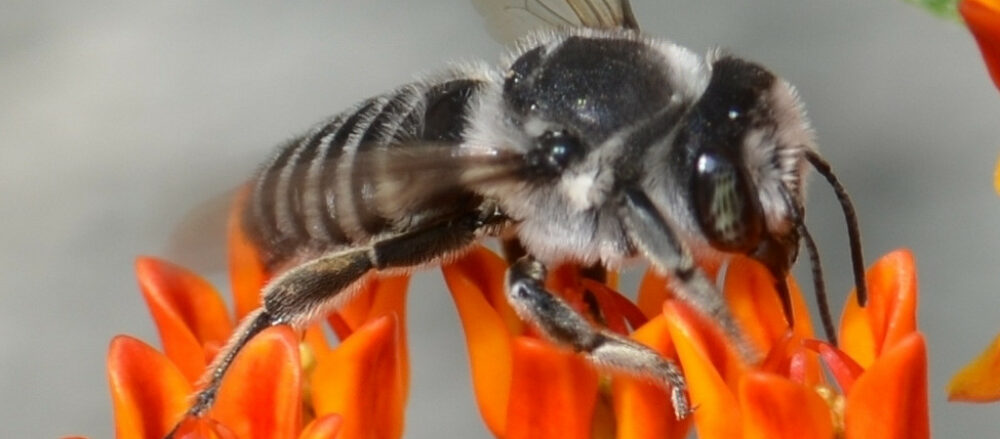
To think evidence of a storm like that would still be around a year later. Fascinating!